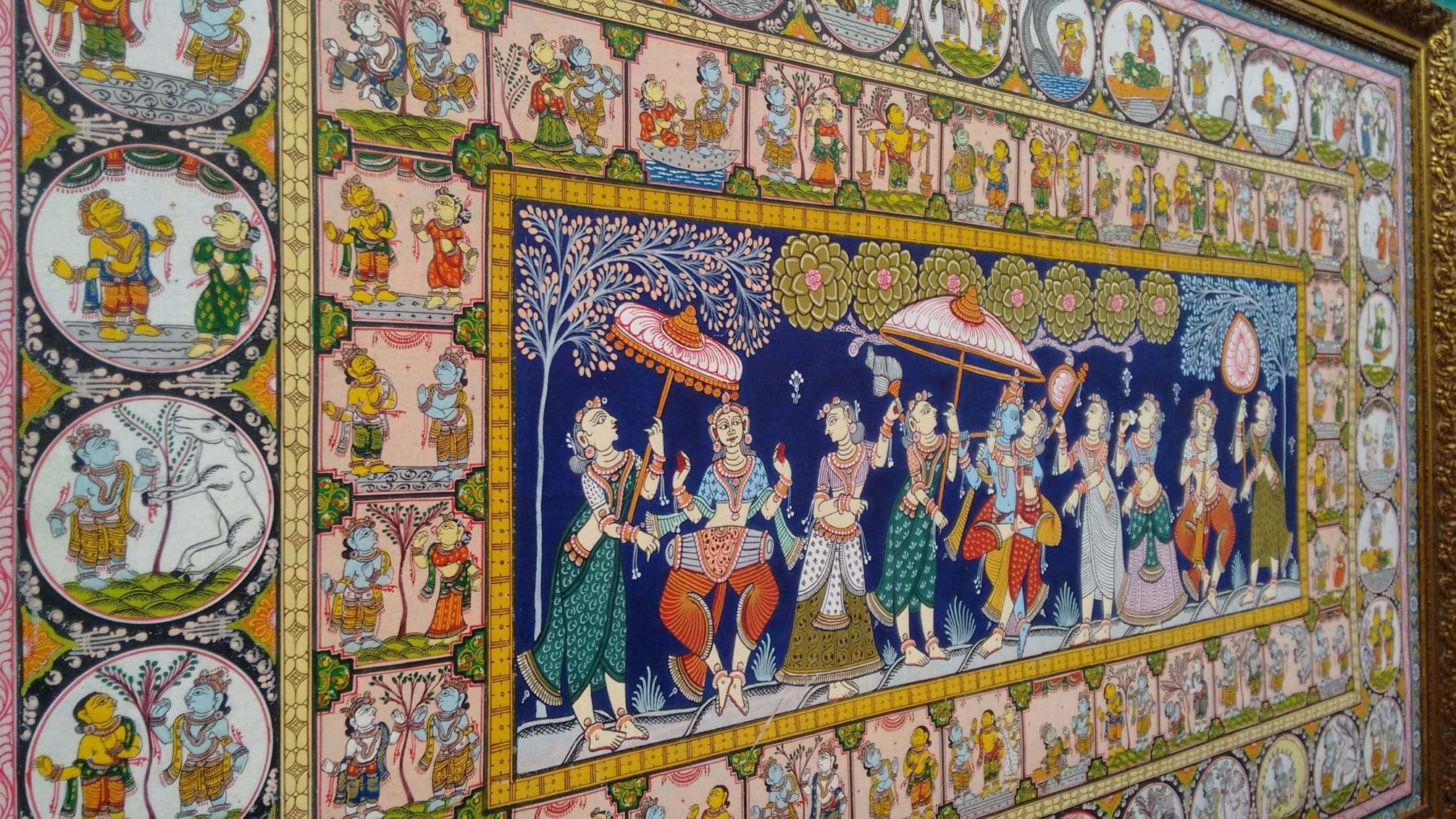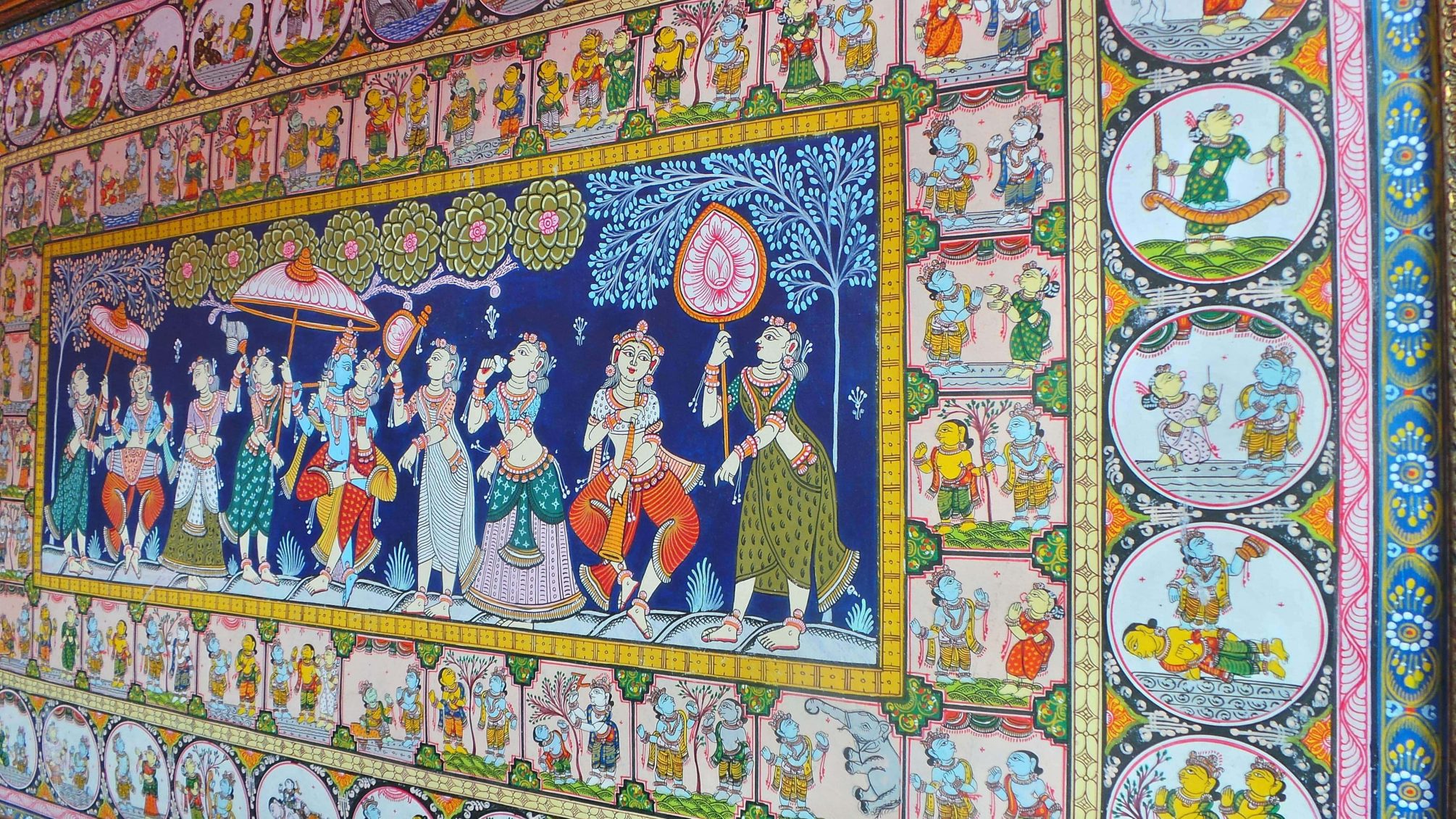
Cotton cloth without starch, is used for making canvas. The cloth is dipped in a solution of tamarind seeds and water over 4 to 5 days. It is sundried and laid on the tamarind seeds solution, and ‘kaitha’ or wood apple gum is applied on it. Another processed cloth is overlapped on this and gum paste is applied to stick the layers. It is again sun dried and a paste of chalk powder, tamarind seeds and wood apple gum is applied on both sides and sun dried. OOfff….such a tedious process and we are still not done! After drying this, it has to be rubbed with a stone called ‘khaddar’ several times for smoothening the canvas. After this, another stone, called ‘chikana’ stone is used for rubbing the canvas. This gives it a shine. Thank God…it’s now ready for painting. The canvas feels thick and leathery after the process.
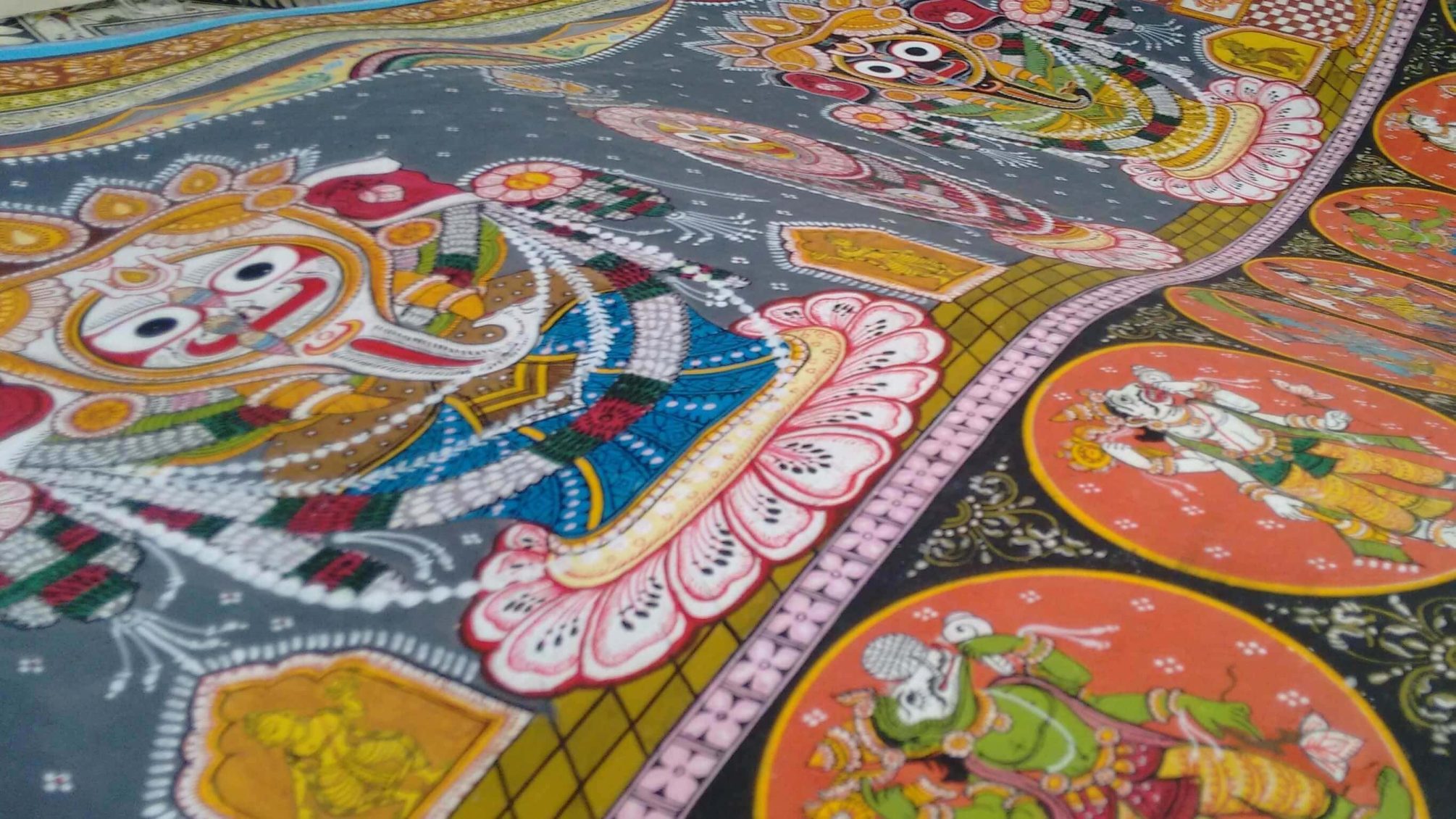
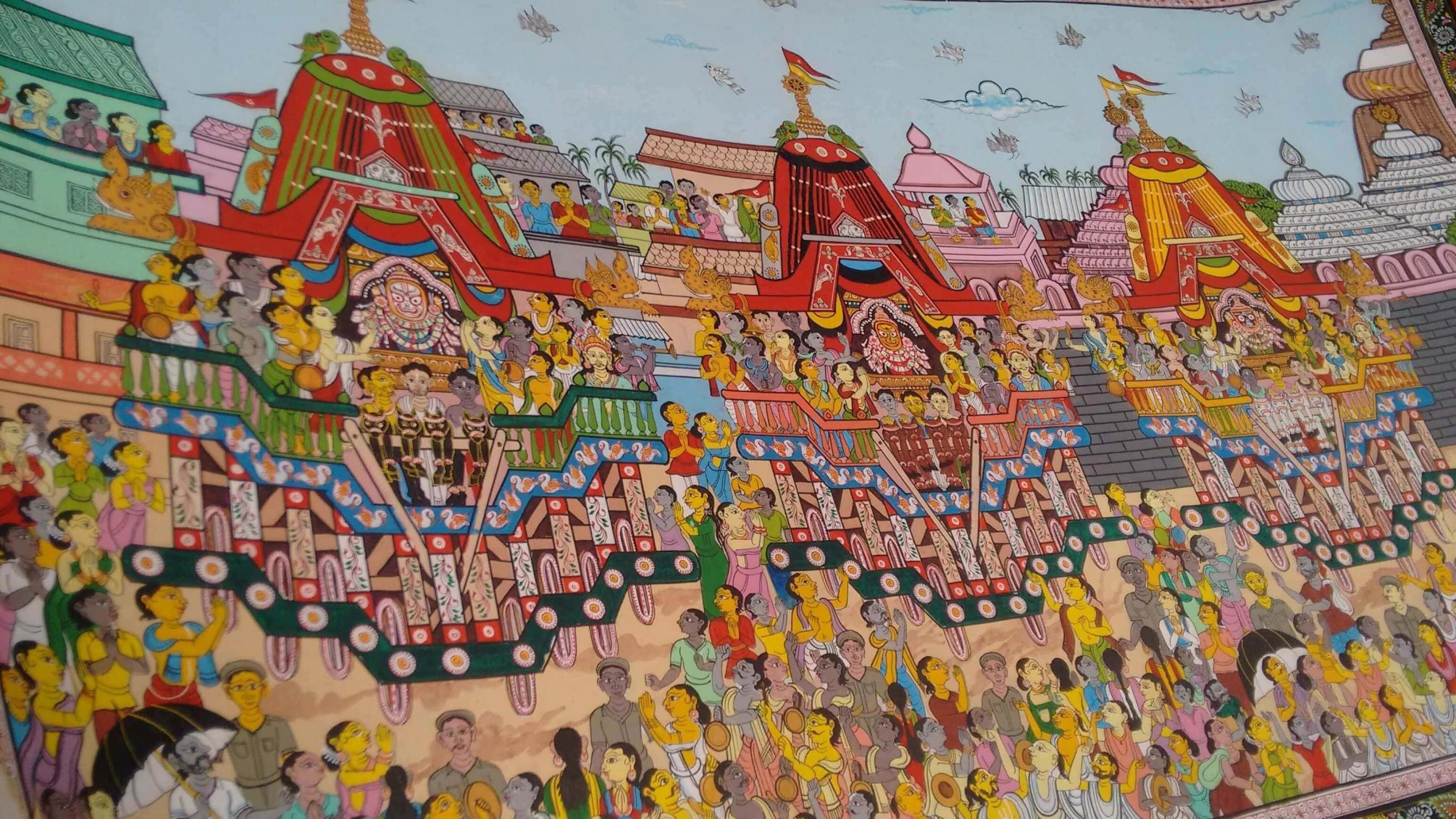
In urban areas artists like us will just pick some bottles of acrylic paints, but not so in Orissa ‘Patachitras’. They use natural colours from leaves, minerals and stones. Earlier it was difficult for the artists to find these raw materials. But now they are easily available. Mr. Sahoo tells me, colour preparation takes nearly two months. Check out the different colours and their source.
White – The shells from the seaside are powdered, boiled and purified two to three times.
Black – Lamp soot is collected.
Brown – Geru stone is powdered.
Yellow – Hartal stone from Jaipur is powdered and boiled. After the water is removed, the paste is sundried.
Red – Hingulal stone found in Orissa is used.
Blue – A stone in Orissa called Khandneela is used.
Green – Leaves are dried, boiled and the paste is sieved and dried. This is ground with hand with a little water.
These colours are prepared and stored for use. A little quantity is taken and mixed with water and wood apple gum to be used as required.
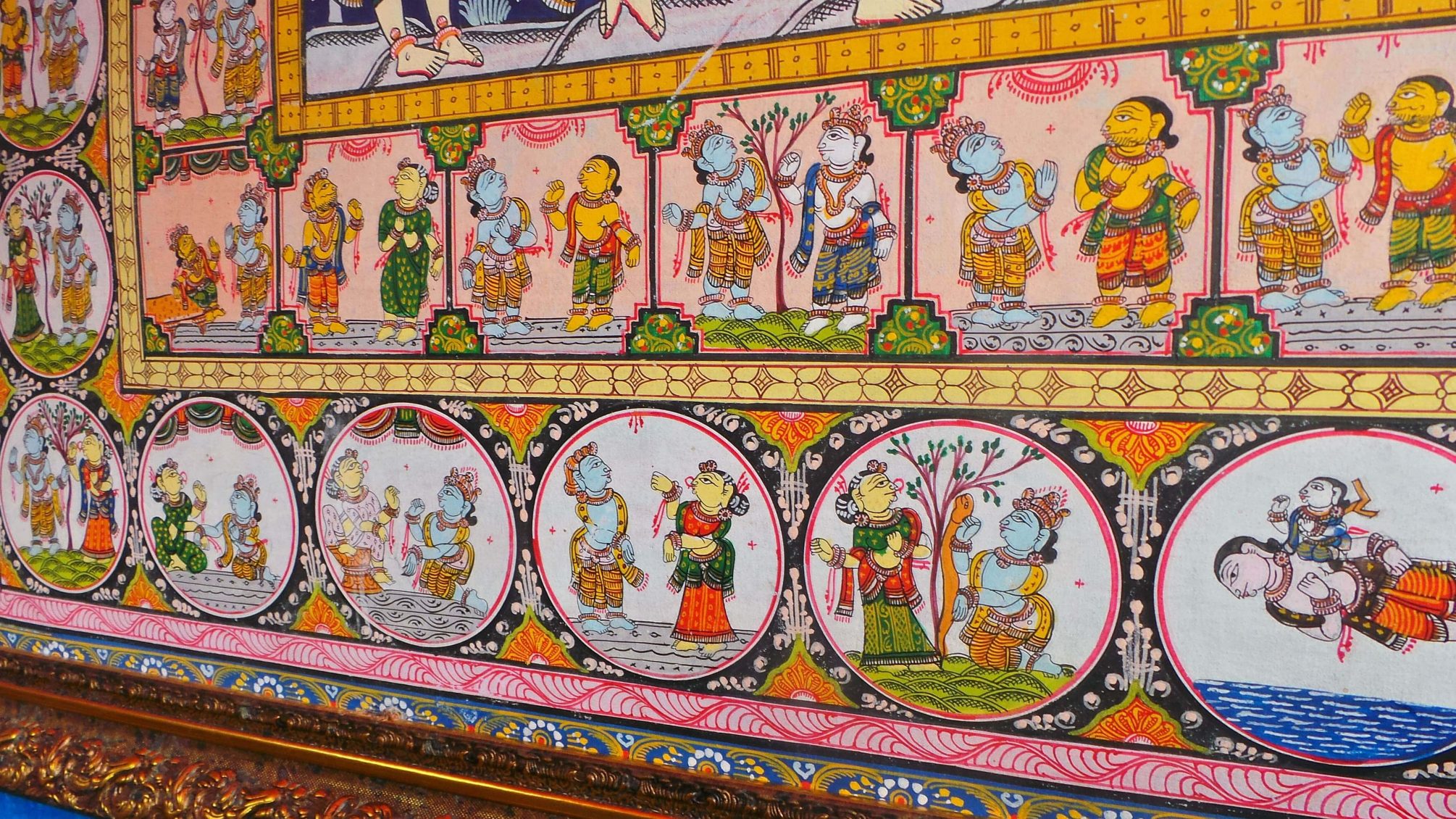
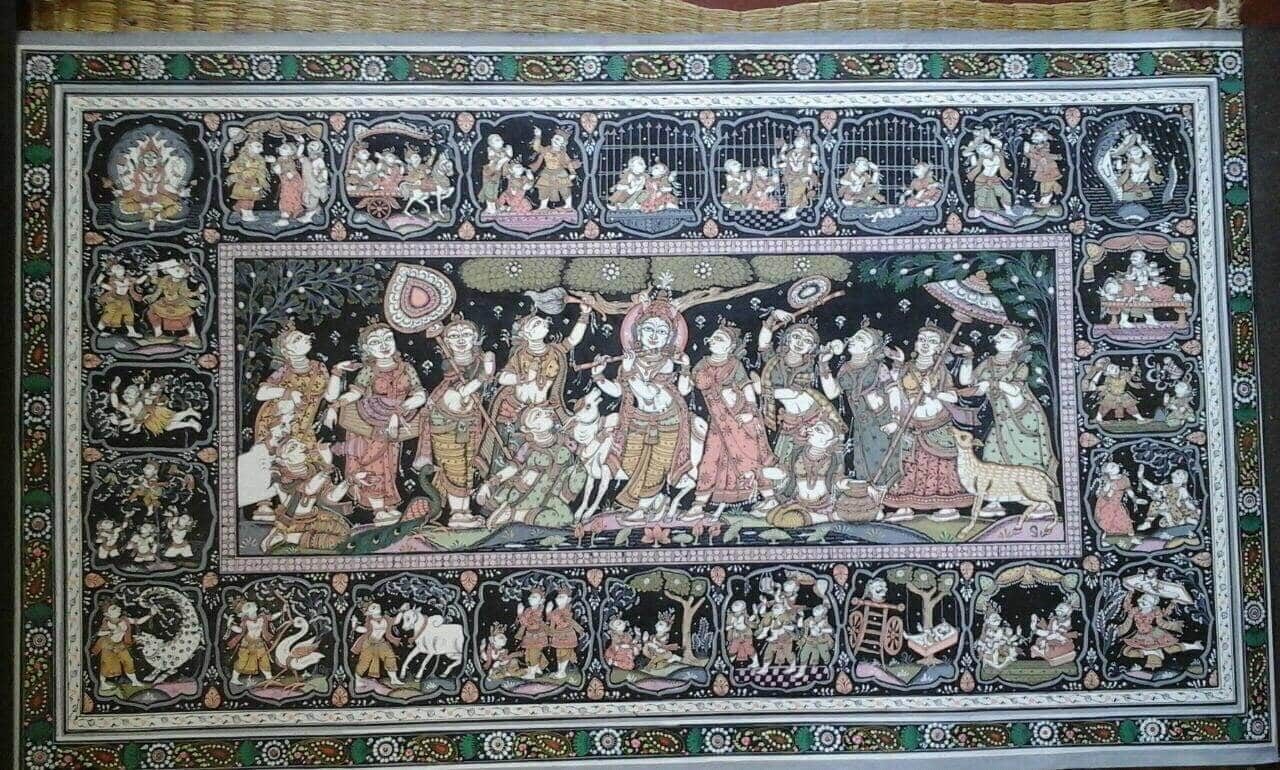
1. ‘Krishna leela’ is a favourite of artists, depicting Krishna’s childhood.
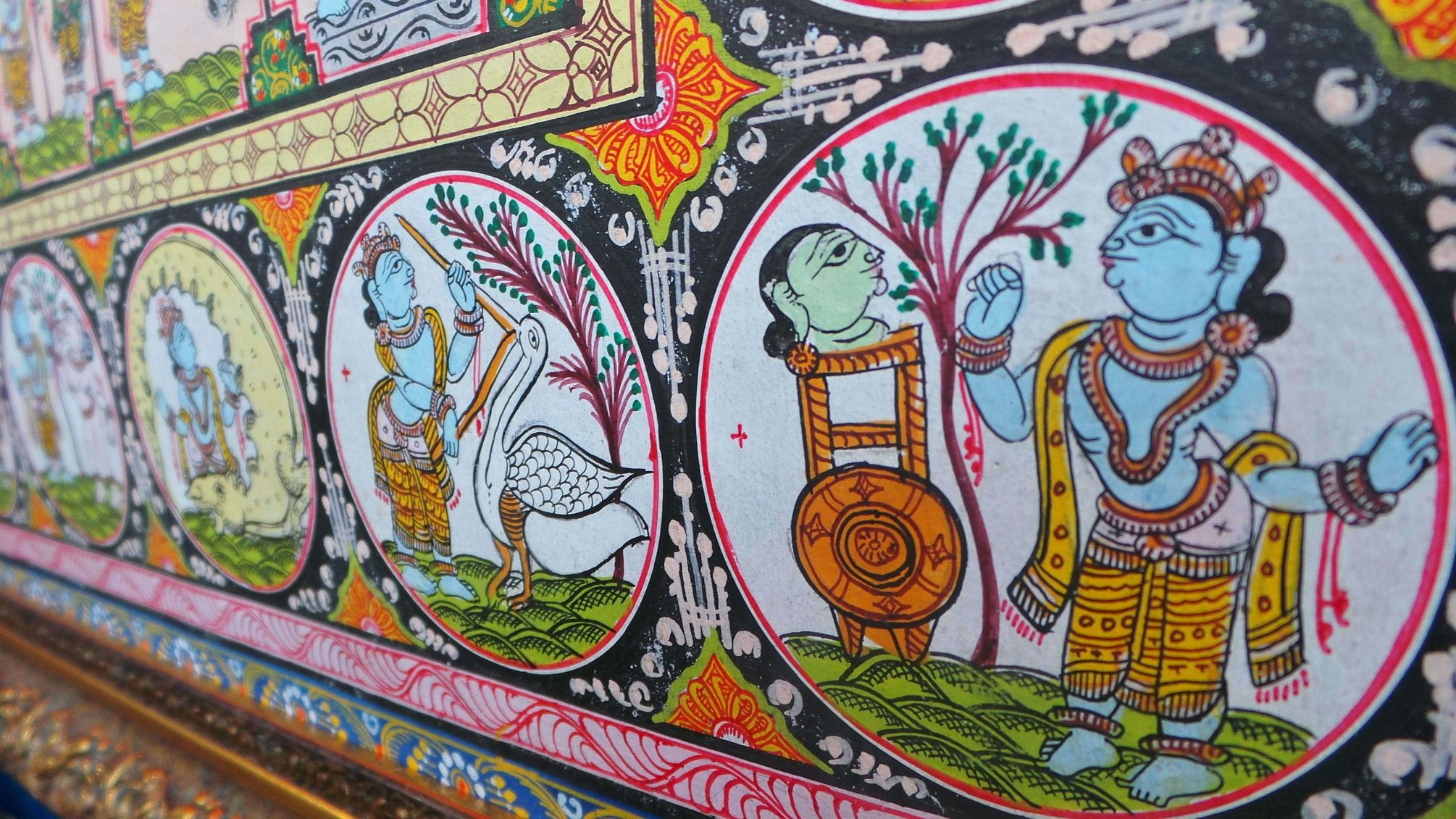
3. ‘Thia Badhia’ , the representation of the Jagannath temple in Orissa.
4. ‘Rama Ravana Judha’, which is the battle between Rama and Ravana in Ramayana.
5. ‘Kanchi Abhijana’, which is the expedition against the Kingdom of Kanchi. (I have this painting, but did not know the story. But now I know!)
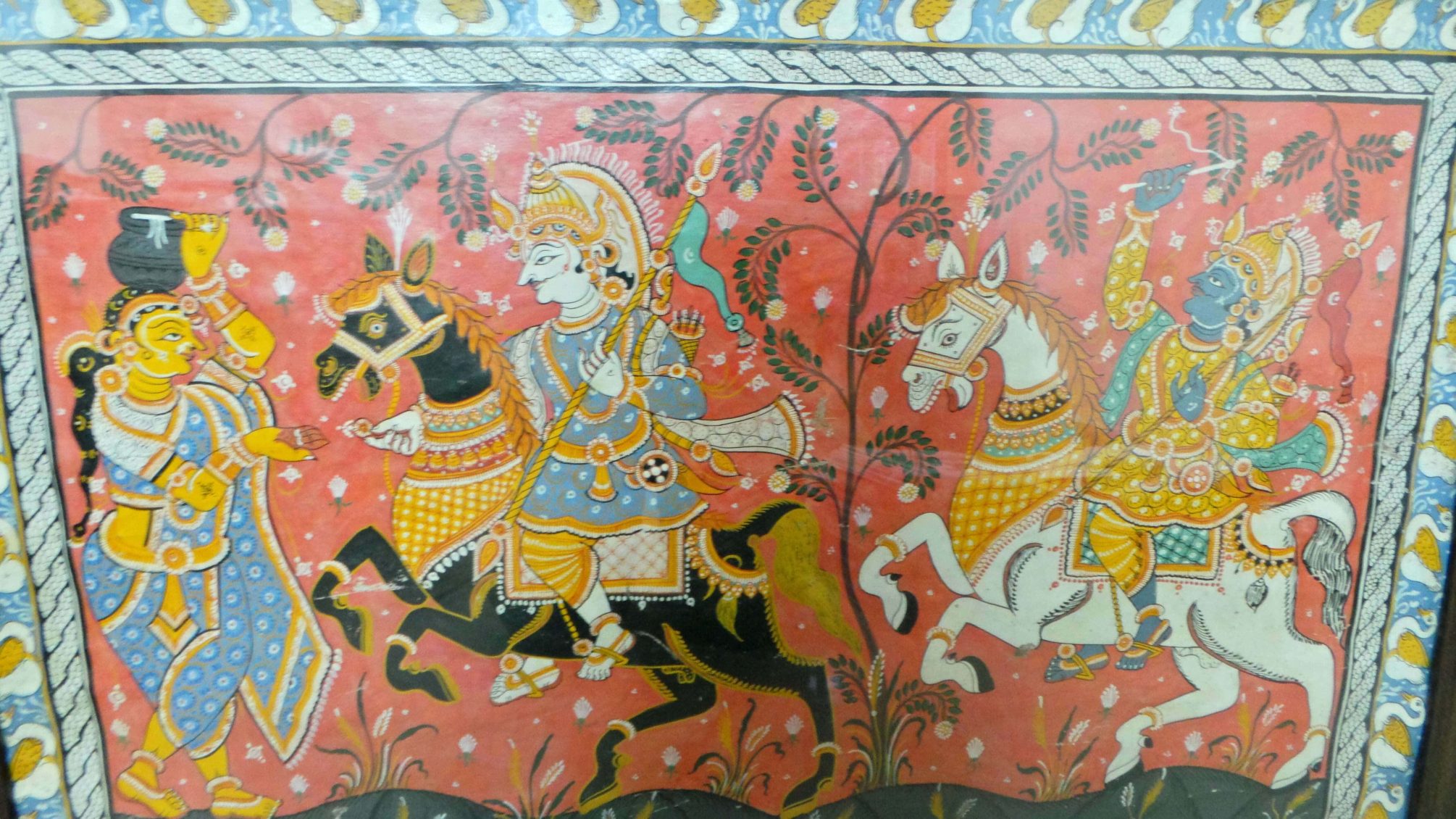
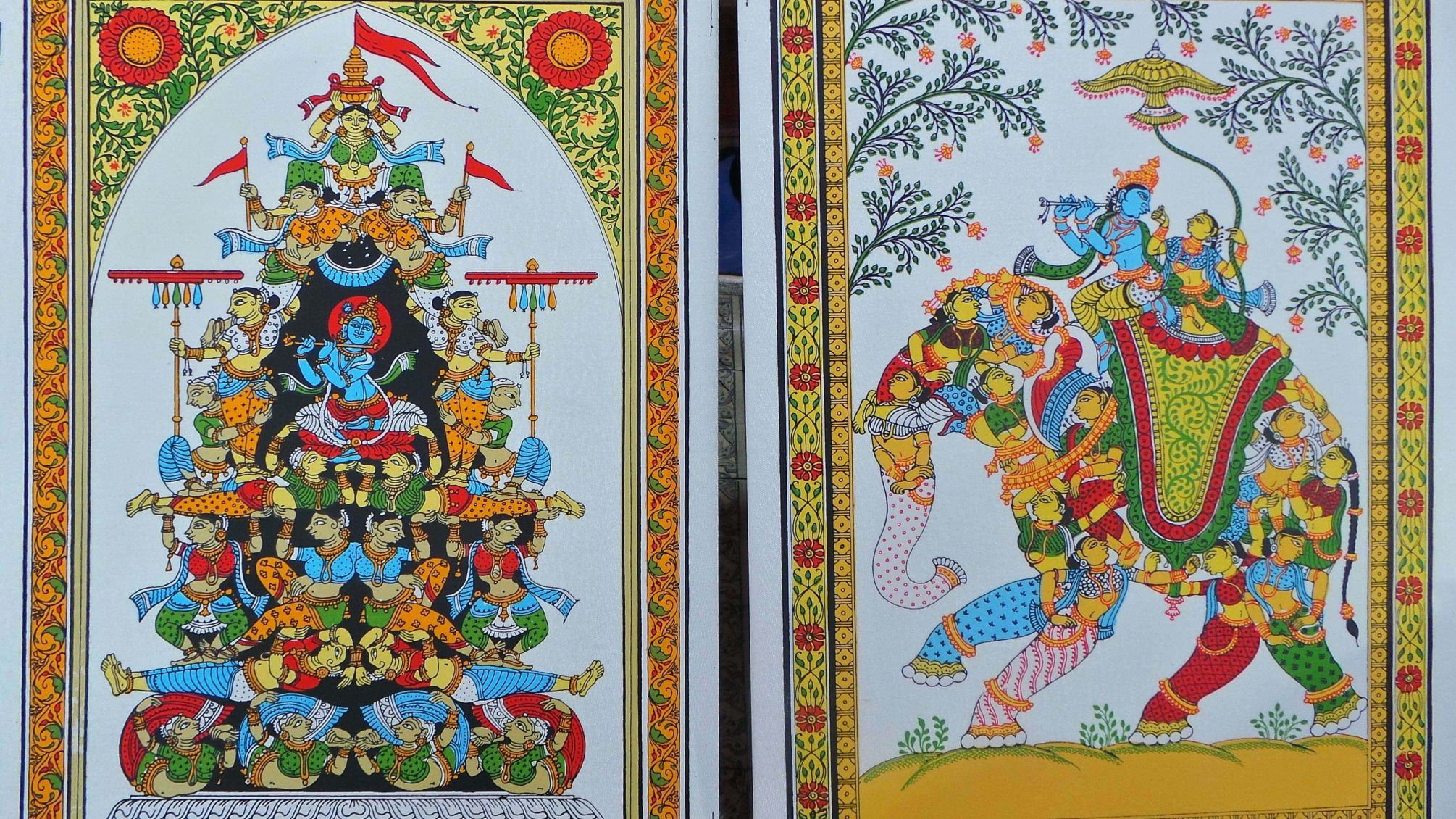
I think I am in love again…with these ‘Patachitras’. Don’t you just love them??
Twinkles to you. Have a great week.
Anupama
PS- Mr. Sahoo’s contact details have been shared in the earlier post.

